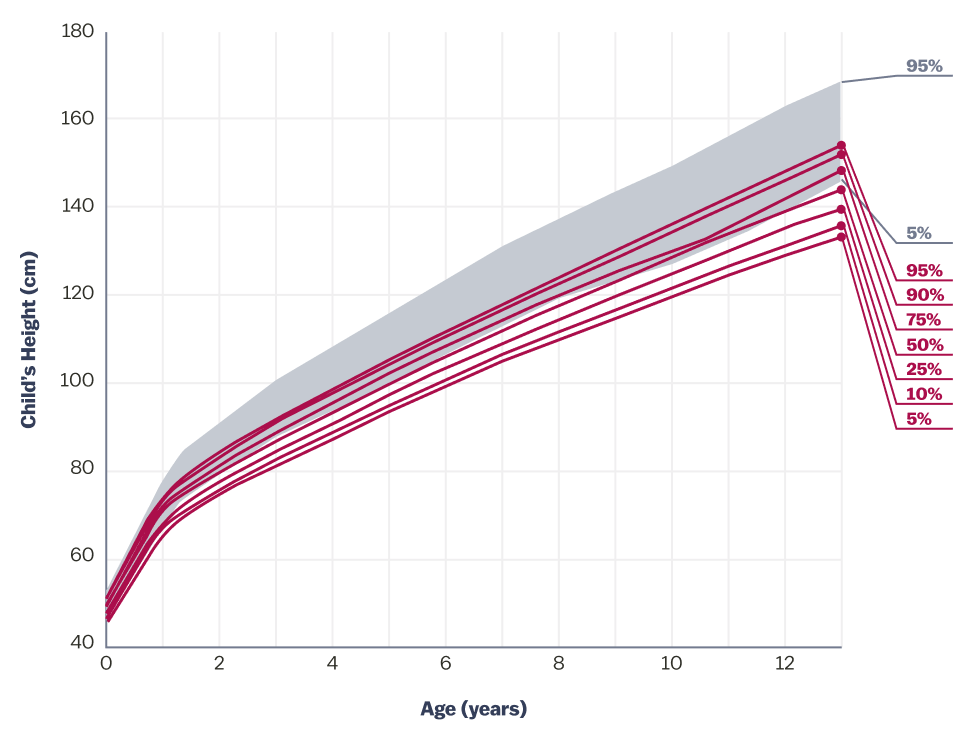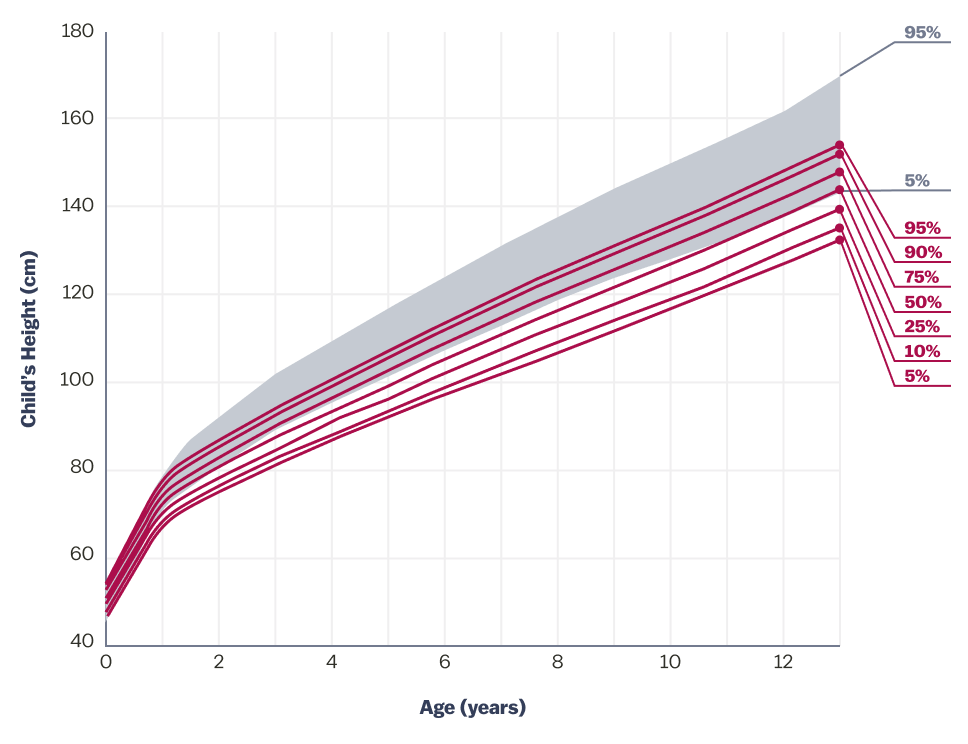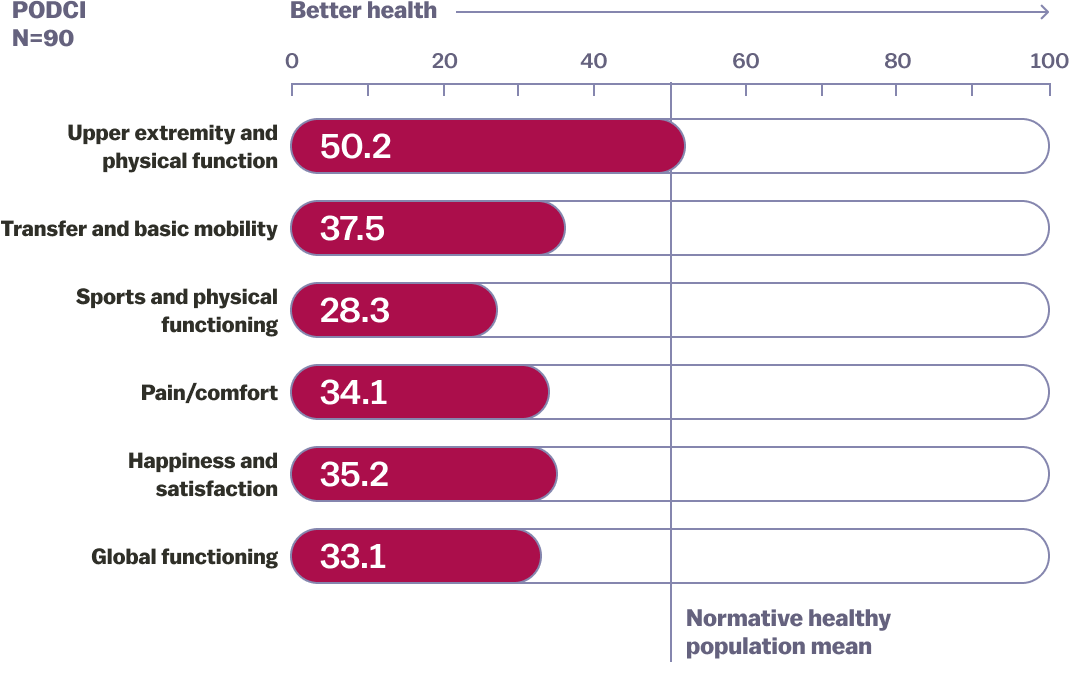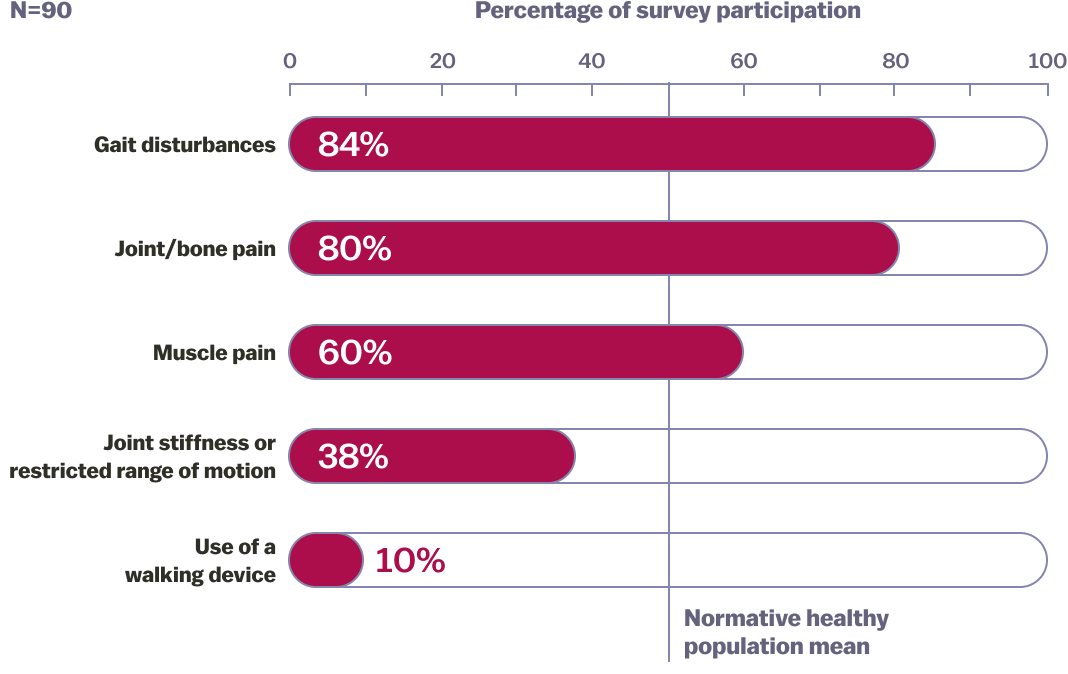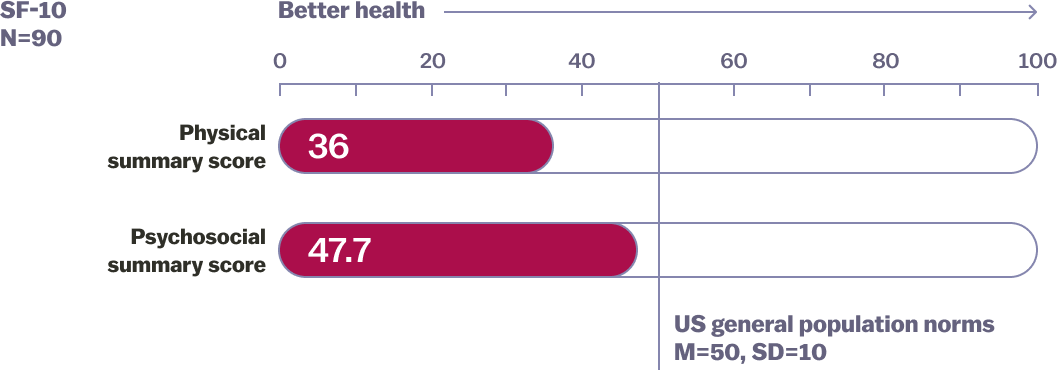A 2019 survey* showed that children with XLH scored well below the US general population average for basic mobility, physical functioning, pain/comfort, and happiness.2
- The mean score for the upper extremity function domain was within normal limits
The Pediatric Orthopedic Society of North America Pediatric Outcomes Data Collection Instrument Score (POSNA-PODCI) is a parent-reported questionnaire to assess overall health, pain, and ability to participate in normal daily activities, as well as in more vigorous activities associated with children. It contains 7 scales that include upper extremity and physical function, transfer and basic mobility, sports and physical functioning, pain/comfort, and happiness and satisfaction.2
Children with XLH often present with short stature and lower extremity abnormalities, both of which may affect their mental health and self-esteem.2,4
- The average SF-10 physical health summary score in children with XLH was lower than the US general population average.2
Accurate and early disease diagnosis can help minimize the lifelong XLH burden on your patients. Learn more about signs and symptoms of XLH.5,6

 Français
Français